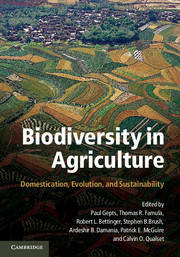Book contents
- Frontmatter
- Contents
- Tables
- Figures
- Foreword
- Contributors
- Acknowledgments
- Introduction: The Domestication of Plants and Animals: Ten Unanswered Questions
- 1 The Local Origins of Domestication
- Section I Early Steps in Agricultural Domestication
- 2 Evolution of Agroecosystems: Biodiversity, Origins, and Differential Development
- 3 From Foraging to Farming in Western and Eastern Asia
- 4 Pre-Domestic Cultivation during the Late Pleistocene and Early Holocene in the Northern Levant
- 5 New Archaeobotanical Information on Plant Domestication from Macro-Remains: Tracking the Evolution of Domestication Syndrome Traits
- 6 New Archaeobotanical Information on Early Cultivation and Plant Domestication Involving Microplant (Phytolith and Starch Grain) Remains
- 7 How and Why Did Agriculture Spread?
- 8 California Indian Proto-Agriculture: Its Characterization and Legacy
- Section II Domestication of Animals and Impacts on Humans
- Section III Issues in Plant Domestication
- Section IV Traditional Management of Biodiversity
- Section V Uses of Biodiversity and New and Future Domestications
- Index
- References
2 - Evolution of Agroecosystems: Biodiversity, Origins, and Differential Development
Published online by Cambridge University Press: 05 June 2012
- Frontmatter
- Contents
- Tables
- Figures
- Foreword
- Contributors
- Acknowledgments
- Introduction: The Domestication of Plants and Animals: Ten Unanswered Questions
- 1 The Local Origins of Domestication
- Section I Early Steps in Agricultural Domestication
- 2 Evolution of Agroecosystems: Biodiversity, Origins, and Differential Development
- 3 From Foraging to Farming in Western and Eastern Asia
- 4 Pre-Domestic Cultivation during the Late Pleistocene and Early Holocene in the Northern Levant
- 5 New Archaeobotanical Information on Plant Domestication from Macro-Remains: Tracking the Evolution of Domestication Syndrome Traits
- 6 New Archaeobotanical Information on Early Cultivation and Plant Domestication Involving Microplant (Phytolith and Starch Grain) Remains
- 7 How and Why Did Agriculture Spread?
- 8 California Indian Proto-Agriculture: Its Characterization and Legacy
- Section II Domestication of Animals and Impacts on Humans
- Section III Issues in Plant Domestication
- Section IV Traditional Management of Biodiversity
- Section V Uses of Biodiversity and New and Future Domestications
- Index
- References
Summary
The emergence and establishment of the world's agricultural systems can be seen in retrospect as a very gradual process in which, through the Holocene, humanity became more and more dependent for food on fewer and fewer species of crops and domestic animals – to the extent that now just three cereal crops, rice, wheat, and maize, provide most of the energy humans derive from plant foods. Much of this dramatic reduction in diet breadth occurred in the twentieth century, and it conceals a 12,000-year history of plant and animal domestications, dispersals, adoptions, and exchanges revealed by biological, archaeological, and ethnohistorical evidence. In recent years new genetic, bioarchaeological, and dating techniques have increasingly been used in investigations of the beginnings of agriculture; in particular there has been an upsurge of research on plant and animal domestication (Zeder et al. 2006). At the same time much new archaeological evidence has been acquired of early crops and domestic animals in regions previously largely disregarded in the search for agricultural origins, such as parts of South Asia, tropical Africa, eastern North America and lowland South America east of the Andes (e.g., Piperno and Pearsall 1998, Neumann 2003, Fuller 2006, Smith 2006a,b).
It is now clear that the processes by which systems of agricultural production eventually became established in almost all cultivable areas were more varied and complex than previously assumed, and there are still great gaps in our knowledge of the diverse trajectories that led to the emergence, development and worldwide spread of agriculture. One approach to a better understanding of those trajectories is to examine how many so-called hunter–gatherers enhanced their food supplies by intervening in the life cycles of the plants and animals on which they depended.
- Type
- Chapter
- Information
- Biodiversity in AgricultureDomestication, Evolution, and Sustainability, pp. 21 - 56Publisher: Cambridge University PressPrint publication year: 2012
References
- 10
- Cited by

